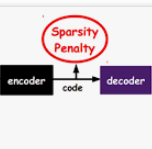We consider the neural sparse representation to solve Boltzmann equation with BGK and quadratic collision model, where a network-based ansatz that can approximate the distribution function with extremely high efficiency is proposed. Precisely, fully connected neural networks are employed in the time and spatial space so as to avoid the discretization in space and time. The different low-rank representations are utilized in the microscopic velocity for the BGK and quadratic collision model, resulting in a significant reduction in the degree of freedom. We approximate the discrete velocity distribution in the BGK model using the canonical polyadic decomposition. For the quadratic collision model, a data-driven, SVD-based linear basis is built based on the BGK solution. All these will significantly improve the efficiency of the network when solving Boltzmann equation. Moreover, the specially designed adaptive-weight loss function is proposed with the strategies as multi-scale input and Maxwellian splitting applied to further enhance the approximation efficiency and speed up the learning process. Several numerical experiments, including 1D wave and Sod problems and 2D wave problem, demonstrate the effectiveness of these neural sparse representation methods.
翻译:我们考虑的是以BGK和四面形碰撞模型解决布尔茨曼方程式的神经稀薄代表面,其中提出了一种基于网络的肛门,可以以极高的效率来接近分布功能。准确的说,在时间和空间空间中使用了完全连接的神经网络,以避免空间和时间的离散。BGK和四面形碰撞模型的微缩速度使用了不同的低空代表面,导致自由程度的大幅度下降。我们用卡通式聚四面形分解定位来接近BGK模型的离散速度分布。对于四面形碰撞模型,一个数据驱动的、基于SVD的线性基础建立在BGK解决方案的基础上。所有这些都将大大提高网络在解决Boltzmann方程式时的效率。此外,还提出了特别设计的适应体重损失功能,其战略是多尺度投入和Maxwellian分解,以进一步提高近似效率和加速学习过程。一些数字实验,包括1D波和2D波形问题和2D波状代表面问题,展示了这些神经结构方法的有效性。




